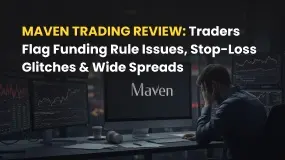简体中文
繁體中文
English
Pусский
日本語
ภาษาไทย
Tiếng Việt
Bahasa Indonesia
Español
हिन्दी
Filippiiniläinen
Français
Deutsch
Português
Türkçe
한국어
العربية
10 Best Forex Pairs To Trade in 2023
Abstract:To optimize trading conditions, it is advisable to focus on highly liquid forex pairs that provide tight spreads and efficient trade execution. Explore the top 10 most actively traded currency pairs globally and learn how to engage in trading them.

The optimal forex pair for trading will vary depending on individual trading strategies. However, in general, the most favored forex pairs are characterized by high liquidity, significant volatility, and substantial trading volume during the desired trading session.
Now, let's delve deeper into each of these aspects.
Liquidity
The forex market is renowned for its high liquidity, enabling quick and efficient execution of transactions. However, it's important to note that not all currencies exhibit the same level of liquidity.
Major currency pairs, which account for approximately 75% of forex trading volume, are generally easier to trade compared to minor and exotic pairs. This is because major pairs attract a larger number of buyers and sellers. It comes as no surprise that all major pairs include the US dollar, given the size and significance of the US economy.
Higher liquidity leads to tighter spreads, meaning that the market price doesn't need to fluctuate as significantly for a trade to be profitable.
Under normal market conditions, major currency pairs and liquid cross rates typically exhibit spreads of 1-5 pips between the bid and ask prices. However, during periods of low liquidity, this spread can widen, requiring additional capital to cover trading costs.
Volatility
Volatility, or the speed of change in exchange rates, varies across different currency pairs. As a forex trader, it's important to consider volatility as it directly influences risk levels and trading decisions.
Traders with a long-term perspective often prefer less volatile pairs, aiming for stable trends over extended periods. On the other hand, short-term speculators may seek opportunities to profit from frequent price fluctuations and opt for more volatile pairs.
In the forex market, price movements are measured in pips, which represent the smallest decimal place in a currency quote. Therefore, traders focusing on shorter timeframes typically target currency pairs with greater pip movement.
Time of day
The choice of which currency pairs to trade depends on the time of day, as it significantly impacts market liquidity and price movements.

Analyzing the average pip movement of major currency pairs during each forex trading session reveals that the London session, operating from 08:00 to 16:00 GMT, typically exhibits the highest level of price volatility.
A general guideline is that currency pairs tend to have the greatest liquidity and price action when two trading sessions overlap. For instance, if trading EUR/JPY, it is advisable to focus on the time when both the New York and Sydney sessions are open, which occurs between 8:00 to 9:00 (GMT).
What are the best forex pairs to trade?
When it comes to forex trading, the most favorable currency pairs to trade are typically the ones with the highest trade volume, indicating greater liquidity. The latest data from the Bank for International Settlements (BIS) Triennial Survey highlights the following pairs as having the highest liquidity levels:
EUR/USD

EUR/USD, often referred to as the 'fibre', is widely recognized as the most popular forex pair due to its high trading volume and tight spreads. Its appeal stems from the opportunity to speculate on the performance of two major economies, the United States and the Eurozone.
The EUR/USD pair is primarily influenced by political developments that impact the value of the US dollar and the euro, as well as their dynamic relationship. For instance, if the Federal Reserve implements measures to strengthen the dollar, it is likely to appreciate against the euro, resulting in a decline in the value of the EUR/USD pair.
EUR/USD is often favored by novice traders due to the abundance of information available online regarding this pair.
USD/JPY
USD/JPY is often associated with narrow spreads and relatively predictable price movements compared to other currency pairs.
While the value of the Japanese yen can exhibit daily price volatility, the Bank of Japan frequently intervenes in the foreign exchange market to manage exchange rates and support its export-oriented economy.
As a result, the yen is often described as being under a “dirty float” regime, meaning it is a floating currency but subject to central bank intervention. Trading USD/JPY allows traders to capitalize on these regular fluctuations if they can identify opportune moments to buy and sell.
USD/JPY, also known as the “gopher,” has gained popularity as a way to trade the relationship and tensions between the United States and Asian regions, particularly in areas like technology and e-commerce where competition is intensifying.

GBP/USD
GBP/USD, commonly referred to as 'cable,' has always enjoyed significant popularity. However, due to notable economic and political events in the UK, such as the 2008 financial crisis and the UK's decision to leave the EU, there has been a substantial increase in the number of traders speculating on the UK economy.
More recently, in September 2022, GBP/USD attracted significant attention as the UK government and Bank of England grappled with controlling inflation, leading to a sharp decline in the pound's value to its lowest level since 1985.
The currency pair is often categorized as volatile, with these significant price movements contributing to its appeal. However, it is crucial to remember that greater volatility also entails increased risk, necessitating the use of stop-loss and take-profit orders to safeguard trades.

USD/CNY
USD/CNY represents the exchange rate between the US dollar and the Chinese renminbi or yuan, reflecting the relationship between the world's two largest economies and major exporters.
Traditionally, the value of the yuan has been lower compared to the US dollar, as the Chinese government has intentionally kept it artificially undervalued to enhance the competitiveness of its exports in the global market.
In recent times, the key factor to monitor when trading the USD/CNY pair is the ongoing tensions between the US and China, which have arisen due to various reasons over the years. For instance, in August 2022, Beijing suspended US-China climate talks and severed high-level military communication channels in response to US House Speaker Nancy Pelosi's visit to Taiwan.
CNY is the forex symbol for the onshore Chinese renminbi trading market, while the offshore trading of the yuan is denoted as CNH. Consequently, on trading platforms, this pair is listed as USD/CNH. CNH has generally exhibited higher volatility compared to CNY, as it has been subject to less strict control by the Chinese government.

AUD/USD
AUD/USD, also known as the 'Aussie', represents approximately 5.4% of daily forex trades. It is favored by traders as the value of the Australian dollar is closely tied to commodity prices, providing an opportunity for FX traders to gain exposure to the market without directly trading futures contracts.
Australia holds a prominent position as a major exporter of coal and iron ore globally. Consequently, any decline in commodity prices would impact the economy and result in a decrease in the value of the Australian dollar. This, in turn, would cause the price of AUD/USD to decline, as fewer US dollars would be required to purchase one Australian dollar.
If you have an interest in holding AUD, it is essential to closely monitor commodity prices that significantly impact the Australian economy, along with announcements from the Reserve Bank of Australia and the Federal Reserve.

USD/CHF
USD/CHF represents the exchange rate between the US dollar and the Swiss franc (CHF), Switzerland's official currency.
Typically, this currency pair is favored by traders and investors seeking to safeguard their assets during periods of market volatility and economic downturn. The Swiss franc (CHF) is widely regarded as a 'safe-haven' currency due to the stability of the Swiss financial system. As a result, it has the potential to appreciate when other currencies experience a decline in value.
Conversely, during times of economic stability, the value of the Swiss franc (CHF) often weakens in comparison to other currencies that are appreciating.

USD/HKD
USD/HKD represents the exchange rate between the US dollar and the Hong Kong dollar. While it falls under the category of an exotic pair due to the Hong Kong dollar being tied to a non-major economy, it still holds a significant daily trade volume of 2.4% according to the BIS survey.
The Hong Kong dollar operates on a 'linked exchange rate' system, whereby its value is pegged to the US dollar within a specified band of 7.75 to 7.85. This arrangement results in less volatility for USD/HKD compared to other currency pairs, making it attractive to swing traders.

USD/SGD
USD/SGD represents the exchange rate between the US dollar and the Singaporean dollar, also known as the 'Sing'. It reflects the number of Singaporean dollars needed to purchase one US dollar.
Given Singapore's status as a prominent financial hub in Asia, trading the USD/SGD pair provides exposure to the country's robust economy and the broader Asian region.
The currency pair is influenced by regional developments, such as the US-China trade dispute that significantly impacted its movements in 2019. Additionally, any policy decisions made by the central banks of both countries can have an impact on USD/SGD.

EUR/GBP
EUR/GBP represents the exchange rate between two major economies, the Eurozone and the UK. However, it is classified as a minor pair since it does not involve the US dollar.
Predicting the movement of EUR/GBP can be challenging due to the intricate and uncertain relationship between the economies. The volatility of EUR/GBP was particularly pronounced during the Brexit process. As the UK faces the prospect of a more severe recession compared to the Eurozone, the pound is likely to experience further depreciation against the euro.
To trade EUR/GBP effectively, it is crucial to closely monitor the ongoing political and economic developments between the UK and the EU. Additionally, keeping track of the interest rates set by the Bank of England and the European Central Bank can provide valuable insights for trading decisions.

The choice of the optimal currency pair depends on your specific trading strategy and preferences. However, many traders prefer currency pairs with high trading volume and liquidity, as they tend to offer greater volatility and trading opportunities.
Among the popular choices are the major currency pairs, which involve the US dollar as one of the currencies. Examples of these pairs include EUR/USD, GBP/USD, USD/JPY, and USD/CHF.

Disclaimer:
The views in this article only represent the author's personal views, and do not constitute investment advice on this platform. This platform does not guarantee the accuracy, completeness and timeliness of the information in the article, and will not be liable for any loss caused by the use of or reliance on the information in the article.
Read more

Global Guide to Finding Forex IBs/Brokers — Share Your Pick and Win Big!
Dear forex enthusiasts, are you also troubled by these questions? “In India, can’t find a reliable IB? What should I do?” “With so many brokers, which one offers the lowest spreads and fastest withdrawals?” “Want to connect with local forex enthusiasts but don’t know where to start?” Now, leave these challenges to us! Share your experience and win exciting rewards!

Maven Trading Review: Traders Flag Funding Rule Issues, Stop-Loss Glitches & Wide Spreads
Are you facing funding issues with Maven Trading, a UK-based prop trading firm? Do you find Mavin trading rules concerning stop-loss and other aspects strange and loss-making? Does the funding program access come with higher spreads? Does the trading data offered on the Maven Trading login differ from what’s available on the popular TradingView platform? These are some specific issues concerning traders at Maven Trading. Upset by these untoward financial incidents, some traders shared complaints while sharing the Maven Trading Review. We have shared some of their complaints in this article. Take a look.

BTSE Review: Ponzi Scam, KYC Verification Hassles & Account Blocks Hit Traders Hard
Have you lost your capital with BTSE’s Ponzi scam? Did the forex broker onboard you by promising no KYC verification on both deposits and withdrawals, only to be proven wrong in real time? Have you been facing account blocks by the Virgin Islands-based forex broker? These complaints have become usual with traders at BTSE Exchange. In this BTSE review article, we have shared some of these complaints for you to look at. Read on!

Inzo Broker Review 2025: Is It Legit or a High-Risk Gamble?
When you ask, "Is inzo broker legit?" you want a clear, straight answer before putting your money at risk. The truth about Inzo Broker is complicated. Finding out if it's legitimate means looking carefully at its rules, trading setup, and most importantly, the real experiences of traders who have used it. The broker shows a mixed picture - it has official paperwork from an offshore regulator, but it also has many user warnings about how it operates. This review gives you a fair and fact-based investigation. We will break down all the information we can find, from company records to serious user complaints, so you can make your own clear decision.
WikiFX Broker
Latest News
2 Malaysians Arrested in $1 Million Gold Scam Impersonating Singapore Officials
Moomoo Singapore Opens Investor Boutiques to Strengthen Community
OmegaPro Review: Traders Flood Comment Sections with Withdrawal Denials & Scam Complaints
An Unbiased Review of INZO Broker for Indian Traders: What You Must Know
BotBro’s “30% Return” Scheme Raises New Red Flags Amid Ongoing Fraud Allegations
The 5%ers Review: Is it a Scam or Legit? Find Out from These Trader Comments
WikiEXPO Dubai 2025 Concludes Successfully — Shaping a Transparent, Innovative Future
Admirals Cancels UAE License as Part of Global Restructuring
Forex Expert Recruitment Event – Sharing Insights, Building Rewards
Exness Broker Expands in South Africa with Cape Town Hub
Currency Calculator



